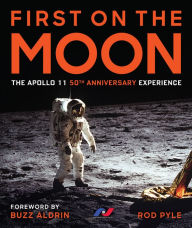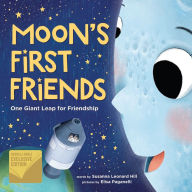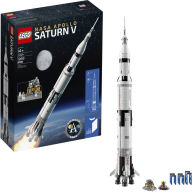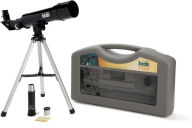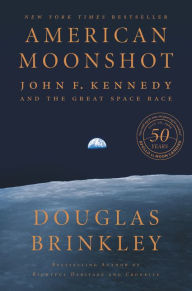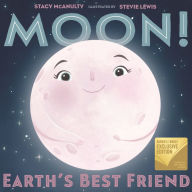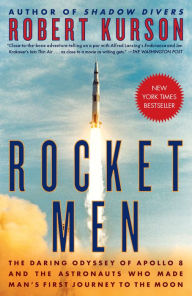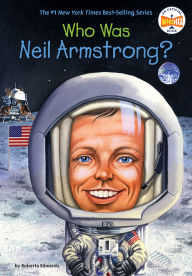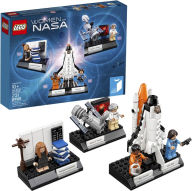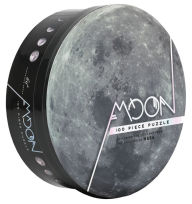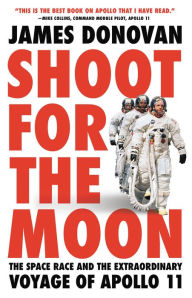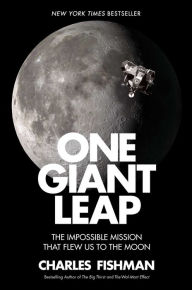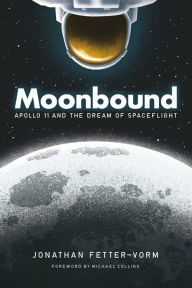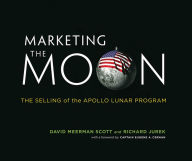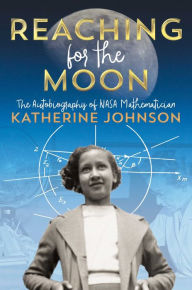Celebrating 50 Years Since the Apollo 11 Moon Landing
On July 16, 1969, a Saturn V rocket launched from Florida’s Kennedy Space Center carrying the Apollo 11 spacecraft. Four days later, on July 20, Apollo’s Lunar Module touched down on the surface of Earth’s moon, and American astronauts Neil Armstrong and Buzz Aldrin became the first humans to set foot on extraterrestrial soil.
Fifty years is a long time in some ways, but it’s well within the lifetime of many living people (including two of the mission’s astronauts), and in the scope of human history it’s barely yesterday—not nearly long enough for us to take our exploration of the Moon for granted. Humans looked at the Moon in wonder for millennia; but those alive in the last half century are the first to have any real understanding of its mysteries. Because it’s easy to forget just how extraordinary an accomplishment that was, this year’s landmark anniversary is a good time to reconnect with the stories of the astronauts, scientists, mathematicians, engineers, and even PR people who somehow took us down a very long road that lead to one of our most awe-inspiring human achievements, a feat now immortalized in history books, picture books, collectibles, and even LEGO bricks..
First on the Moon: The Apollo 11 50th Anniversary Experience
First on the Moon: The Apollo 11 50th Anniversary Experience
By
Rod Pyle
Foreword by
Buzz Aldrin
Hardcover $29.95
First on the Moon: The Apollo 11 50th Anniversary Experience, by Rod Pyle with Buzz Aldrin
Rod Pyle’s gorgeous, full-color coffee table-style book goes behind-the-scenes of the Apollo 11 mission, exploring the adventure and the scientific and engineering accomplishments of the first Moon landing. Based on Pyle’s spent years combing NASA archives and private collections, the book includes stunning pictures and newly restored photomontages as well as reproductions of original 1969 documents. Buzz Aldrin provides an introduction, and there are new interviews with the adult children of the original astronauts.It’s a thorough but accessible narrative of the events that led to the Apollo 11 mission, and a visually stunning commemoration of the achievement.
First on the Moon: The Apollo 11 50th Anniversary Experience, by Rod Pyle with Buzz Aldrin
Rod Pyle’s gorgeous, full-color coffee table-style book goes behind-the-scenes of the Apollo 11 mission, exploring the adventure and the scientific and engineering accomplishments of the first Moon landing. Based on Pyle’s spent years combing NASA archives and private collections, the book includes stunning pictures and newly restored photomontages as well as reproductions of original 1969 documents. Buzz Aldrin provides an introduction, and there are new interviews with the adult children of the original astronauts.It’s a thorough but accessible narrative of the events that led to the Apollo 11 mission, and a visually stunning commemoration of the achievement.
Moon's First Friends: One Giant Leap for Friendship (B&N Exclusive Edition)
Moon's First Friends: One Giant Leap for Friendship (B&N Exclusive Edition)
By
Susanna Leonard Hill
Illustrator
Elisa Paganelli
In Stock Online
Hardcover $17.99
Moon’s First Friends: One Giant Leap for Friendship (B&N Exclusive Edition), by Susanna Leonard Hill and Elisa Paganelli
This unique picture book beautifully reimagines the moon landing from the Moon’s point of view. The Moon watches Earth from afar, curious at the moment of dinosaurs, wondering at the construction of the pyramids, and eager to make friends with all the people she’s observing down on the surface. The day a rocket finally arrives carrying human visitors is the one she’s been waiting for. This lovely, heartwarming story mixes in real facts about the Apollo mission, the Moon, and rockets, and the Barnes & Noble edition features an alternate cover hidden on the back of the dust jacket.
Moon’s First Friends: One Giant Leap for Friendship (B&N Exclusive Edition), by Susanna Leonard Hill and Elisa Paganelli
This unique picture book beautifully reimagines the moon landing from the Moon’s point of view. The Moon watches Earth from afar, curious at the moment of dinosaurs, wondering at the construction of the pyramids, and eager to make friends with all the people she’s observing down on the surface. The day a rocket finally arrives carrying human visitors is the one she’s been waiting for. This lovely, heartwarming story mixes in real facts about the Apollo mission, the Moon, and rockets, and the Barnes & Noble edition features an alternate cover hidden on the back of the dust jacket.
LEGO Ideas NASA Apollo Saturn V 21309 (Retiring Soon)
LEGO Ideas NASA Apollo Saturn V 21309 (Retiring Soon)
Other Format $119.95
LEGO Ideas: NASA Apollo Saturn V
We can’t all be rocket scientists, but anyone can build a rocket thanks to this LEGO kit. The Saturn V was the very rocket that sent humans to land, for the first time, on the Moon. This authentically detailed set includes not just the rocket itself, but also the detachable stages—the three points at which it separated along its flight—as well as the lunar lander and lunar orbiter modules and three astronaut mini figures. This a complete a representation of Apollo 11 from launch to landing in 1,900 pieces, and it even comes with a book about the mission.
LEGO Ideas: NASA Apollo Saturn V
We can’t all be rocket scientists, but anyone can build a rocket thanks to this LEGO kit. The Saturn V was the very rocket that sent humans to land, for the first time, on the Moon. This authentically detailed set includes not just the rocket itself, but also the detachable stages—the three points at which it separated along its flight—as well as the lunar lander and lunar orbiter modules and three astronaut mini figures. This a complete a representation of Apollo 11 from launch to landing in 1,900 pieces, and it even comes with a book about the mission.
50mm Refractor Table Telescope with Case
50mm Refractor Table Telescope with Case
By Celestron
In Stock Online
Other Format $59.99
50mm Refractor Table Telescope with Case from Celestron
Learning about the Moon landing is important, but the real opportunity is to use that story to inspire an interest in science and astronomy among the next generation of explorers. This one, with a 50 mm refractor, a tabletop tripod, and a hard carrying case, makes a great starter telescope for 8 and up crowd. The 50th anniversary of Apollo is a perfect time to get kids looking at the Moon, and help them see for themselves the connection between the adventures of the past to the promise of the future.
50mm Refractor Table Telescope with Case from Celestron
Learning about the Moon landing is important, but the real opportunity is to use that story to inspire an interest in science and astronomy among the next generation of explorers. This one, with a 50 mm refractor, a tabletop tripod, and a hard carrying case, makes a great starter telescope for 8 and up crowd. The 50th anniversary of Apollo is a perfect time to get kids looking at the Moon, and help them see for themselves the connection between the adventures of the past to the promise of the future.
American Moonshot: John F. Kennedy and the Great Space Race
American Moonshot: John F. Kennedy and the Great Space Race
Hardcover $35.00
American Moonshot: John F. Kennedy and the Great Space Race, by Douglas Brinkley
The Moon mission didn’t begin with a Saturn V rocket launching from Florida. It didn’t even begin with John F. Kennedy’s 1961 announcement of a plan to visit the Moon by the end of that decade—but that’s nonetheless a good place to begin the story. Douglas Brinkley, a historian and expert on the Kennedy presidency, revisits the era in full, with new interviews and primary source material that explores the fast-paced scientific, cultural, and political initiatives that made the moonshot happen. It’s a book that tells the stories of the people who lived through—and made—history, including those who, like Kennedy, didn’t live to see the outcome.
American Moonshot: John F. Kennedy and the Great Space Race, by Douglas Brinkley
The Moon mission didn’t begin with a Saturn V rocket launching from Florida. It didn’t even begin with John F. Kennedy’s 1961 announcement of a plan to visit the Moon by the end of that decade—but that’s nonetheless a good place to begin the story. Douglas Brinkley, a historian and expert on the Kennedy presidency, revisits the era in full, with new interviews and primary source material that explores the fast-paced scientific, cultural, and political initiatives that made the moonshot happen. It’s a book that tells the stories of the people who lived through—and made—history, including those who, like Kennedy, didn’t live to see the outcome.
Moon! Earth's Best Friend (B&N Exclusive Edition)
Moon! Earth's Best Friend (B&N Exclusive Edition)
By
Stacy McAnulty
Illustrator
Stevie Lewis
Hardcover $17.99
Moon! Earth’s Best Friend (B&N Exclusive Edition), by Stacy McAnulty and Stevie Lewis
The third part of a trio of books about the Earth, the Sun, and the Moon, this picture book tells the story of our single satellite from her own point of view, in the style of an autobiography. After all, the Moon will never turn her back on us (literally), so it’s only fair that we should listen to what she has to say. Beautifully illustrated, it’s a great way to introduce children to our orbiting friend with kid-friendly facts relayed in an easy-to-understand way.
Moon! Earth’s Best Friend (B&N Exclusive Edition), by Stacy McAnulty and Stevie Lewis
The third part of a trio of books about the Earth, the Sun, and the Moon, this picture book tells the story of our single satellite from her own point of view, in the style of an autobiography. After all, the Moon will never turn her back on us (literally), so it’s only fair that we should listen to what she has to say. Beautifully illustrated, it’s a great way to introduce children to our orbiting friend with kid-friendly facts relayed in an easy-to-understand way.
Rocket Men: The Daring Odyssey of Apollo 8 and the Astronauts Who Made Man's First Journey to the Moon
Rocket Men: The Daring Odyssey of Apollo 8 and the Astronauts Who Made Man's First Journey to the Moon
In Stock Online
Paperback $23.00
Rocket Men: The Daring Odyssey of Apollo 8 and the Astronauts Who Made Man’s First Journey to the Moon, by Robert Kurson
Over 400,000 people contributed to the Apollo program, but three astronauts stood at the public forefront of the program, championing its goals while facing the very real dangers of stepping into the unknown. Before we could land on the Moon, we had to prove that we could safely visit and orbit it—a feat ultimately accomplished by the three Apollo 8 astronauts: Frank Borman, James Lovell, and William Anders. In 1968, one of the most turbulent years in the history of America, the decision was made to put everything on the line and vastly accelerate the program’s timeframe in order to keep ahead of the Soviet Union. While telling the whole story, Kurson focuses on the three men who would be the ones to ride that perilous rocket.
Rocket Men: The Daring Odyssey of Apollo 8 and the Astronauts Who Made Man’s First Journey to the Moon, by Robert Kurson
Over 400,000 people contributed to the Apollo program, but three astronauts stood at the public forefront of the program, championing its goals while facing the very real dangers of stepping into the unknown. Before we could land on the Moon, we had to prove that we could safely visit and orbit it—a feat ultimately accomplished by the three Apollo 8 astronauts: Frank Borman, James Lovell, and William Anders. In 1968, one of the most turbulent years in the history of America, the decision was made to put everything on the line and vastly accelerate the program’s timeframe in order to keep ahead of the Soviet Union. While telling the whole story, Kurson focuses on the three men who would be the ones to ride that perilous rocket.
Who Was Neil Armstrong?
Who Was Neil Armstrong?
By
Roberta Edwards
,
Who HQ
Illustrator
Stephen Marchesi
In Stock Online
Paperback $5.99
Who Was Neil Armstrong?, by Roberta Edwards
The Who HQ books offer a wonderfully accessible way for middle grade children to learn about important figures and events in history. They’re fun, but genuinely informative, and this one begins, appropriately, with the kid who made model rocket planes before becoming a test pilot and astronaut: Neil Armstrong. Over 80 illustrations bring the information to life.
Who Was Neil Armstrong?, by Roberta Edwards
The Who HQ books offer a wonderfully accessible way for middle grade children to learn about important figures and events in history. They’re fun, but genuinely informative, and this one begins, appropriately, with the kid who made model rocket planes before becoming a test pilot and astronaut: Neil Armstrong. Over 80 illustrations bring the information to life.
LEGO Ideas Woman In Space 21312
LEGO Ideas Woman In Space 21312
Other Format $24.95
LEGO Ideas: Women of NASA
The coolest LEGO set? This 4-figure Women of NASA box might well be it. It comes with three builds and four mini figures: astronomer Nancy Grace Roman, computer scientist Margaret Hamilton, and astronauts Sally Ride and Mae Jemison. Roman, whose work planning the Hubble was essential, has a figure attached to a detailed built of the space telescope; Hamilton’s figure is part of a build that includes stacks of books representing the Apollo Guidance Computer onboard flight software source code (books are cool, as is coding); and Ride and Jamison are part of a build that includes a launchpad and a detailed Space Shuttle Challenger. The set also comes with a booklet telling the stories of the four inspiring space pioneers.
LEGO Ideas: Women of NASA
The coolest LEGO set? This 4-figure Women of NASA box might well be it. It comes with three builds and four mini figures: astronomer Nancy Grace Roman, computer scientist Margaret Hamilton, and astronauts Sally Ride and Mae Jemison. Roman, whose work planning the Hubble was essential, has a figure attached to a detailed built of the space telescope; Hamilton’s figure is part of a build that includes stacks of books representing the Apollo Guidance Computer onboard flight software source code (books are cool, as is coding); and Ride and Jamison are part of a build that includes a launchpad and a detailed Space Shuttle Challenger. The set also comes with a booklet telling the stories of the four inspiring space pioneers.
Moon: 100 Piece Puzzle: Featuring photography from the archives of NASA
Moon: 100 Piece Puzzle: Featuring photography from the archives of NASA
Other Format $19.99
100-Piece Moon Puzzle: Featuring Photography from the Archives of NASA, by Chronicle Books LLC
We can’t all go to the Moon, but there are other ways to spend some time appreciating our satellite’s beauty. This oversized, 100-piece floor puzzle (measuring about 2.5 feet in diameter) features a photo of the Moon taken directly from the NASA archives. With a moderate level of difficulty, it’s great for older kids or for families to work on together.
100-Piece Moon Puzzle: Featuring Photography from the Archives of NASA, by Chronicle Books LLC
We can’t all go to the Moon, but there are other ways to spend some time appreciating our satellite’s beauty. This oversized, 100-piece floor puzzle (measuring about 2.5 feet in diameter) features a photo of the Moon taken directly from the NASA archives. With a moderate level of difficulty, it’s great for older kids or for families to work on together.
Shoot for the Moon: The Space Race and the Extraordinary Voyage of Apollo 11
Shoot for the Moon: The Space Race and the Extraordinary Voyage of Apollo 11
Hardcover $30.00
Shoot for the Moon: The Space Race and the Extraordinary Voyage of Apollo 11, by James Donovan
Sputnik 1 was launched by the Soviet Union in 1957, an event that shocked Americans with the revelation that their Cold War adversary might be leaping ahead in the Space Race. It led to the Mercury mission to put an American into orbit, the Gemini mission to extend our capabilities in space, and, of course, the Apollo program, which took us to the Moon. Donovan explores the whole series of events from beginning to end, highlighting the triumphs and disasters of the three programs that eventually did put people on the Moon. There were incredible challenges, heartbreaking losses, and moments that might have turned out very differently—such as when a critical alarm went off 40,000 feet over the lunar surface—were it not for human ingenuity.
Shoot for the Moon: The Space Race and the Extraordinary Voyage of Apollo 11, by James Donovan
Sputnik 1 was launched by the Soviet Union in 1957, an event that shocked Americans with the revelation that their Cold War adversary might be leaping ahead in the Space Race. It led to the Mercury mission to put an American into orbit, the Gemini mission to extend our capabilities in space, and, of course, the Apollo program, which took us to the Moon. Donovan explores the whole series of events from beginning to end, highlighting the triumphs and disasters of the three programs that eventually did put people on the Moon. There were incredible challenges, heartbreaking losses, and moments that might have turned out very differently—such as when a critical alarm went off 40,000 feet over the lunar surface—were it not for human ingenuity.
S'well Nat Geo Rover 17oz. Bottle
S'well Nat Geo Rover 17oz. Bottle
By SWELL BOTTLE
Other Format $35.00
S’well Nat Geo Rover Bottle
If you’re going to go to the Moon, you’ve got to get hydrated. (It’s a start, anyway.) Nat Geo and S’Well have teamed up to create this 17-ounce water bottle celebrating the Apollo landing: a limited-edition collectible that features a diagram of the landing module. It’s eco-friendly, BPA-free, and reusable.
S’well Nat Geo Rover Bottle
If you’re going to go to the Moon, you’ve got to get hydrated. (It’s a start, anyway.) Nat Geo and S’Well have teamed up to create this 17-ounce water bottle celebrating the Apollo landing: a limited-edition collectible that features a diagram of the landing module. It’s eco-friendly, BPA-free, and reusable.
One Giant Leap: The Impossible Mission That Flew Us to the Moon
One Giant Leap: The Impossible Mission That Flew Us to the Moon
Hardcover $29.99
One Giant Leap: The Impossible Mission That Flew Us to the Moon, by Charles Fishman
When President Kennedy challenged us to go to the Moon, no one really knew if it was even possible; nor what the Moon’s surface would really be like; nor how to build a rocket large enough or computer small enough to get us there. Fishman’s book focuses on the people involved: not only the engineers, astronauts, and researchers, but also ordinary Americans like the factory workers (typically women) who sewed spacesuits and parachutes and even computer hardware (which, believe it or not, often involved weaving) by hand. Ultimately, over 400,000 people contributed to the Apollo mission, and many of their stories told here.
One Giant Leap: The Impossible Mission That Flew Us to the Moon, by Charles Fishman
When President Kennedy challenged us to go to the Moon, no one really knew if it was even possible; nor what the Moon’s surface would really be like; nor how to build a rocket large enough or computer small enough to get us there. Fishman’s book focuses on the people involved: not only the engineers, astronauts, and researchers, but also ordinary Americans like the factory workers (typically women) who sewed spacesuits and parachutes and even computer hardware (which, believe it or not, often involved weaving) by hand. Ultimately, over 400,000 people contributed to the Apollo mission, and many of their stories told here.
Moonbound: Apollo 11 and the Dream of Spaceflight
Moonbound: Apollo 11 and the Dream of Spaceflight
By
Jonathan Fetter-Vorm
Foreword by
Michael Collins
In Stock Online
Paperback $28.00
Moonbound: Apollo 11 and the Dream of Spaceflight, by Jonathan Fetter-Vorm with Michael Collins
The Moon landing is celebrated in a whole new way in this graphic history. With an attractive and accessible but in no way simplistic art style, it alternates between a narrative retelling of the harrowing and epic moments immediately prior to the 1969 moon landing, and capsule biographies of key figures like Neil Armstrong, Buzz Aldrin, Margaret Hamilton, and Wehrner von Braun. It’s an impressive and easy-to-absorb homage to an inspiring historical moment, and the remarkable individuals who made it happen.
Moonbound: Apollo 11 and the Dream of Spaceflight, by Jonathan Fetter-Vorm with Michael Collins
The Moon landing is celebrated in a whole new way in this graphic history. With an attractive and accessible but in no way simplistic art style, it alternates between a narrative retelling of the harrowing and epic moments immediately prior to the 1969 moon landing, and capsule biographies of key figures like Neil Armstrong, Buzz Aldrin, Margaret Hamilton, and Wehrner von Braun. It’s an impressive and easy-to-absorb homage to an inspiring historical moment, and the remarkable individuals who made it happen.
Marketing the Moon: The Selling of the Apollo Lunar Program
Marketing the Moon: The Selling of the Apollo Lunar Program
By
David Meerman Scott
,
Richard Jurek
Foreword by
Eugene Cernan
In Stock Online
Hardcover $29.95
Marketing the Moon: The Selling of the Apollo Lunar Program, by David Meerman Scott, Richard Jurek, Eugene Cernan, and Scott-Martin Kosofsky
Amidst the discussions of heroic astronauts and indefatigable scientists, it’s easy to forget that the Apollo program was expensive: a massive undertaking involving thousands of people and billions of dollars. It was also intended to strike a blow to the morale of the Eastern Bloc, making the case that American democracy could reach higher than could Soviet-style communism. If the American public wasn’t onboard, the whole thing could have fallen apart in a number of ways. For the first time, this book turns our attention toward the marketing of Apollo: the press-savvy scientists and astronauts, defense contractors, and PR firms who built a sophisticated apparatus, from logo design to product placement, to convince the U.S. and the world that the Moon program was worth paying attention to—and paying for.
Marketing the Moon: The Selling of the Apollo Lunar Program, by David Meerman Scott, Richard Jurek, Eugene Cernan, and Scott-Martin Kosofsky
Amidst the discussions of heroic astronauts and indefatigable scientists, it’s easy to forget that the Apollo program was expensive: a massive undertaking involving thousands of people and billions of dollars. It was also intended to strike a blow to the morale of the Eastern Bloc, making the case that American democracy could reach higher than could Soviet-style communism. If the American public wasn’t onboard, the whole thing could have fallen apart in a number of ways. For the first time, this book turns our attention toward the marketing of Apollo: the press-savvy scientists and astronauts, defense contractors, and PR firms who built a sophisticated apparatus, from logo design to product placement, to convince the U.S. and the world that the Moon program was worth paying attention to—and paying for.
Reaching for the Moon: The Autobiography of NASA Mathematician Katherine Johnson
Reaching for the Moon: The Autobiography of NASA Mathematician Katherine Johnson
In Stock Online
Hardcover $19.99
Reaching for the Moon: The Autobiography of NASA Mathematician Katherine Johnson, by Katherine Johnson
The recognition is long overdue, but in recent years we’ve come to understand that many of the women (and women of color, like Johnson) who worked at NASA in the 1960s weren’t just fetching coffee. The centenarian mathematician’s calculations of orbital mechanics were essential in getting Mercury, and then Apollo, off the ground—and also in getting their astronauts home. Her work continued well into the Space Shuttle era, and this new middle grade-aimed autobiography is her first effort to tell her own life story in her own words. Though it’s perfect for younger readers who might be interested in sciences, Katherine Johnson’s story is a thrilling, and deserves to be heard by all of us.
How are you celebrating the anniversary of the Apollo mission?
Reaching for the Moon: The Autobiography of NASA Mathematician Katherine Johnson, by Katherine Johnson
The recognition is long overdue, but in recent years we’ve come to understand that many of the women (and women of color, like Johnson) who worked at NASA in the 1960s weren’t just fetching coffee. The centenarian mathematician’s calculations of orbital mechanics were essential in getting Mercury, and then Apollo, off the ground—and also in getting their astronauts home. Her work continued well into the Space Shuttle era, and this new middle grade-aimed autobiography is her first effort to tell her own life story in her own words. Though it’s perfect for younger readers who might be interested in sciences, Katherine Johnson’s story is a thrilling, and deserves to be heard by all of us.
How are you celebrating the anniversary of the Apollo mission?
